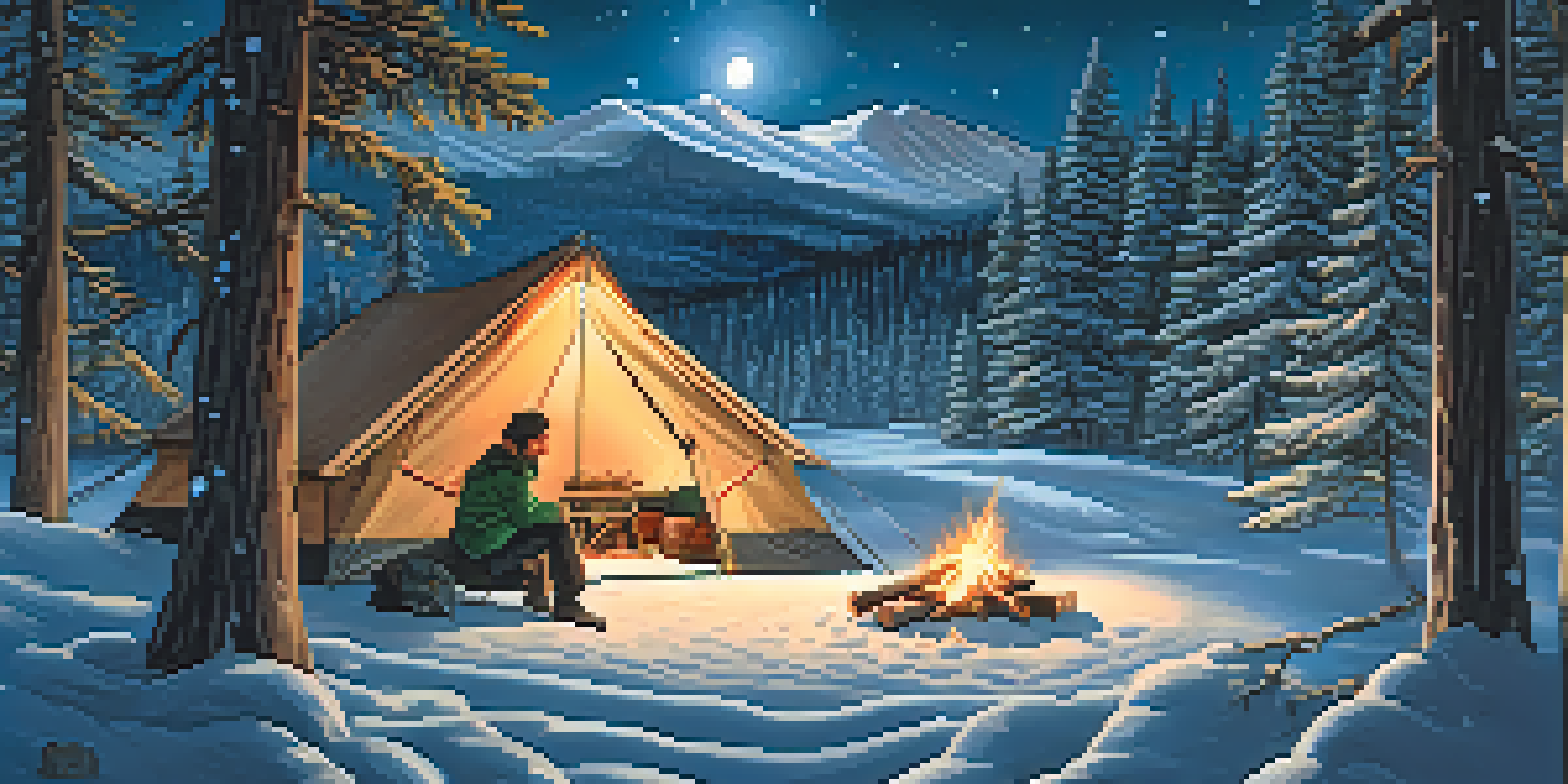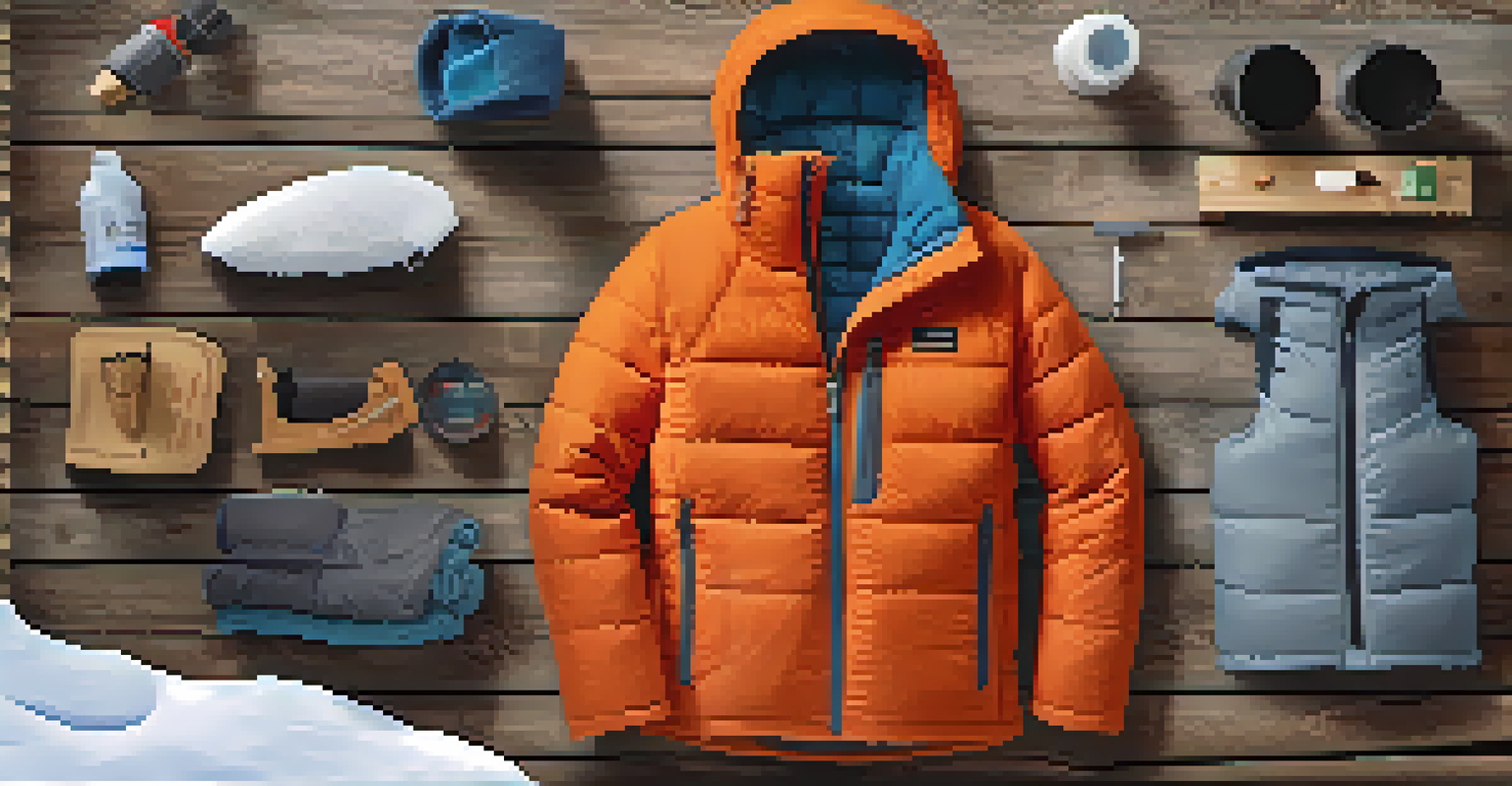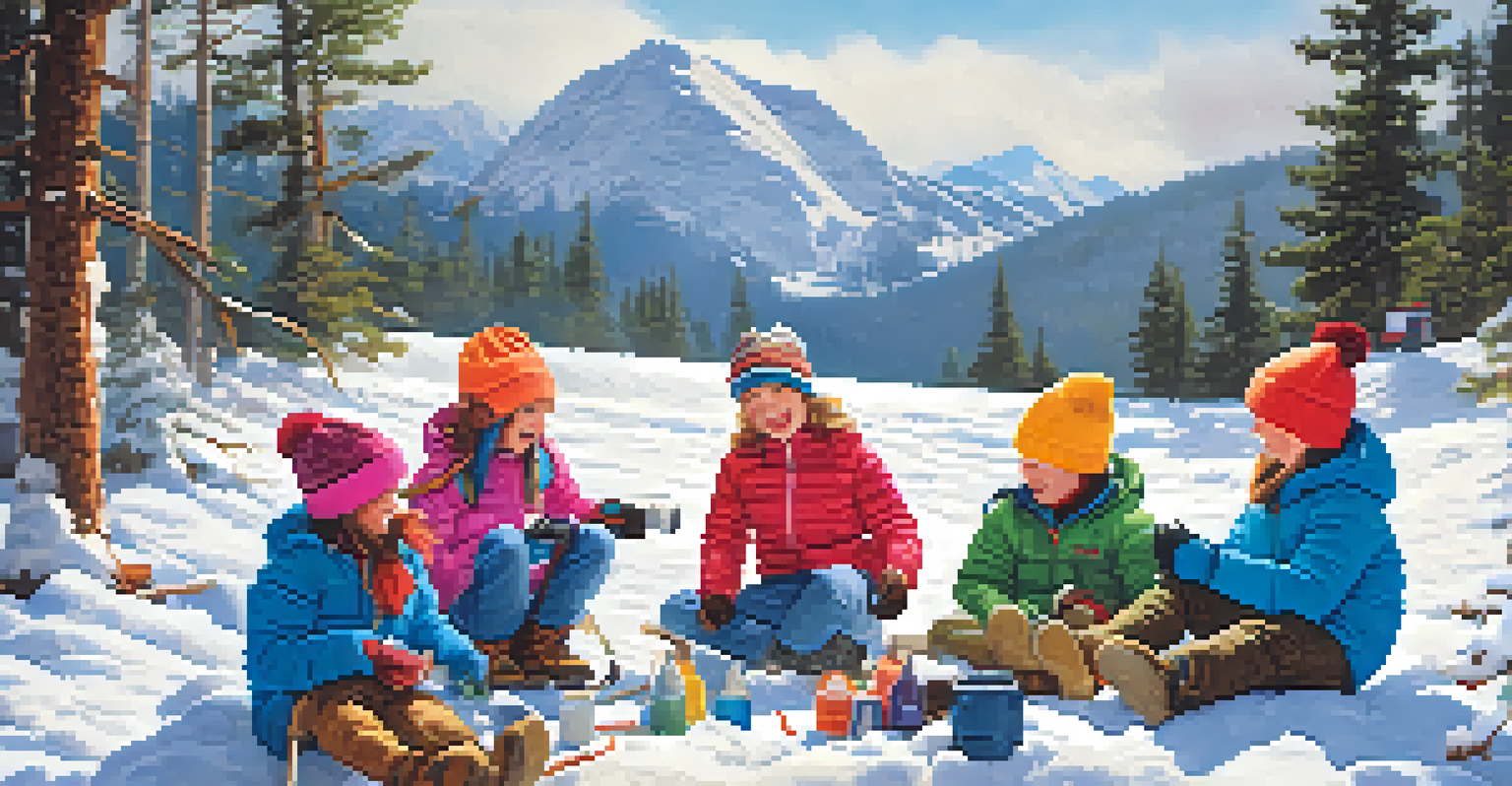How to Stay Warm While Camping in Cold Weather

Choose the Right Camping Gear for Cold Weather
Selecting the appropriate camping gear is crucial for staying warm. Look for tents rated for low temperatures, ensuring they can withstand wind and moisture. Additionally, invest in a high-quality sleeping bag designed for cold weather, as this can make all the difference in your comfort level during the night.
There's no such thing as bad weather, only inappropriate clothing.
Don’t forget about your sleeping pad! A good insulated sleeping pad not only offers comfort but also acts as a barrier between you and the cold ground. The R-value of the pad indicates its insulation effectiveness, so aim for a higher R-value for winter camping.
Lastly, consider layering your clothing. Base layers, insulating mid-layers, and waterproof outer layers work together to trap heat while shielding you from the elements. This combination will keep you warm and dry, allowing you to enjoy your outdoor adventure.
Master the Art of Layering Your Clothing
Layering is the key to staying warm while camping in cold weather. Start with a moisture-wicking base layer to keep sweat away from your skin, as dampness can lead to chilling. Merino wool or synthetic fabrics are great choices for this layer.

Next, add an insulating layer, such as fleece or down, to trap warmth. This layer should fit comfortably over your base layer without being too tight, allowing for easy movement. Remember, you can always remove a layer if you start to feel too warm.
Choose Gear for Cold Weather
Investing in high-quality, insulated gear like tents, sleeping bags, and pads is essential for staying warm while camping.
Finally, finish with a waterproof and windproof outer layer. This shell will protect you from the elements, ensuring that wind and precipitation don’t sap your body heat. With the right layers, you can easily adjust your comfort level as the temperature fluctuates throughout the day.
Keep Your Campsite Dry and Windproof
A dry campsite is essential for warmth, so choose a location that avoids water runoff and has natural windbreaks like trees or hills. Avoid setting up your tent in low-lying areas where cold air settles, as this can lead to a chillier night.
In every walk with nature, one receives far more than he seeks.
Utilizing a tarp can provide extra protection against moisture. Setting up a tarp above your cooking and sitting areas keeps these spaces dry and allows for cooking and gathering even in light rain or snow. This extra layer can also help block wind, further improving your comfort.
Finally, always remember to clear snow or debris from your tent area before setting up. This ensures proper insulation and allows you to maintain a warm sleeping environment, making your camping experience much more enjoyable.
Stay Active to Generate Body Heat
Engaging in physical activity is a natural way to keep warm while camping. Light exercises like hiking or even a brisk walk can help generate body heat, making you feel warmer. Just be sure not to overexert yourself, as sweating can lead to chilling once you stop moving.
Consider playing games or engaging in group activities that involve movement. This not only keeps everyone warm but also adds a fun, social element to your camping experience. Plus, laughter is a great way to lift spirits on a chilly day!
Layer Clothing Effectively
Utilizing a moisture-wicking base layer, insulating mid-layers, and waterproof outer layers helps maintain warmth and comfort in cold conditions.
Even simple tasks, such as gathering firewood or setting up your campsite, can help you stay warm. By staying active, you’re not only generating heat but also keeping your mind engaged with your surroundings, enhancing the overall camping experience.
Utilize a Campfire for Warmth and Comfort
A campfire is a classic camping companion, providing both warmth and a cozy atmosphere. It’s the perfect spot to gather after a long day, sharing stories and laughter with friends. Plus, the heat radiating from the fire can significantly increase your comfort level.
When setting up a campfire, make sure to choose a safe, designated area away from your tent and gear. Gather dry wood and kindling to ensure a strong, lasting fire. Always follow local regulations regarding campfires to protect the environment and keep your campsite safe.
Don’t forget to bring along a few extra blankets or sleeping bags to wrap around you while sitting by the fire. This added layer not only enhances warmth but also makes the whole experience more enjoyable as you relax and unwind in the flickering glow.
Stay Hydrated and Nourished for Better Warmth
Staying warm is not just about clothing and gear; maintaining proper hydration and nutrition plays a vital role too. When camping in cold weather, it’s easy to forget to drink water, but dehydration can sap your energy and make you feel colder. Aim to drink water regularly, even if you're not thirsty.
Warm meals and drinks can also help raise your body temperature. Consider packing warm soups, stews, or hot beverages like tea or cocoa to enjoy at mealtime. A warm meal not only comforts you but also gives you the energy needed to stay active outdoors.
Stay Active and Nourished
Engaging in physical activities and consuming warm meals and snacks are crucial for generating body heat and maintaining energy levels while camping.
Additionally, snack on high-energy foods, such as nuts and dried fruits, to keep your metabolism working. Eating regularly helps your body generate heat, which is essential for maintaining warmth while camping in colder conditions.
Know When to Head Indoors for Safety
While the great outdoors can be inviting, it’s essential to recognize when conditions become unsafe. If temperatures drop too low or if severe weather conditions arise, it may be time to seek shelter indoors. Always pay attention to local weather reports to stay informed.
Being overly cold for extended periods can lead to hypothermia, a serious condition that can occur even in above-freezing temperatures. Signs include shivering, confusion, and fatigue. If you or a fellow camper exhibits these symptoms, take immediate action to warm up.

Ultimately, your safety should always come first. If conditions are too harsh, don’t hesitate to pack up and head to a cabin or indoor camping space. It’s better to be warm and safe than to risk health issues while trying to enjoy the great outdoors.